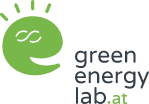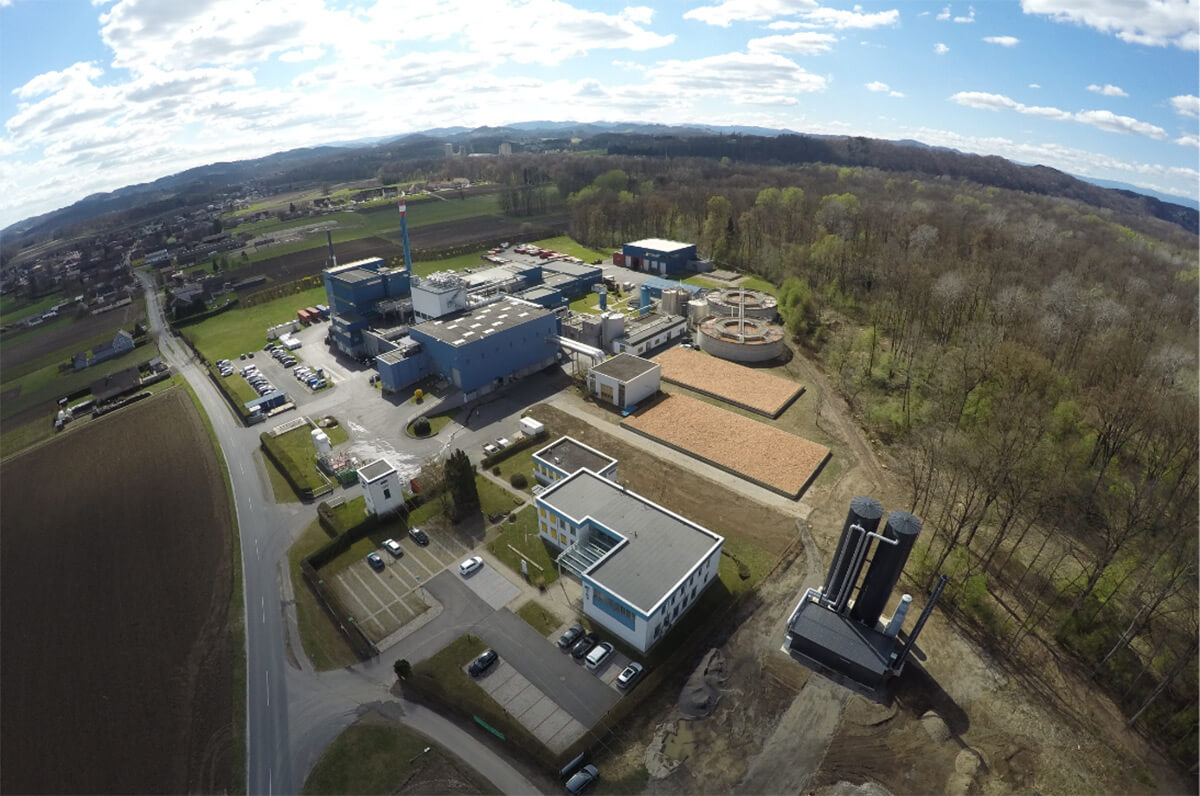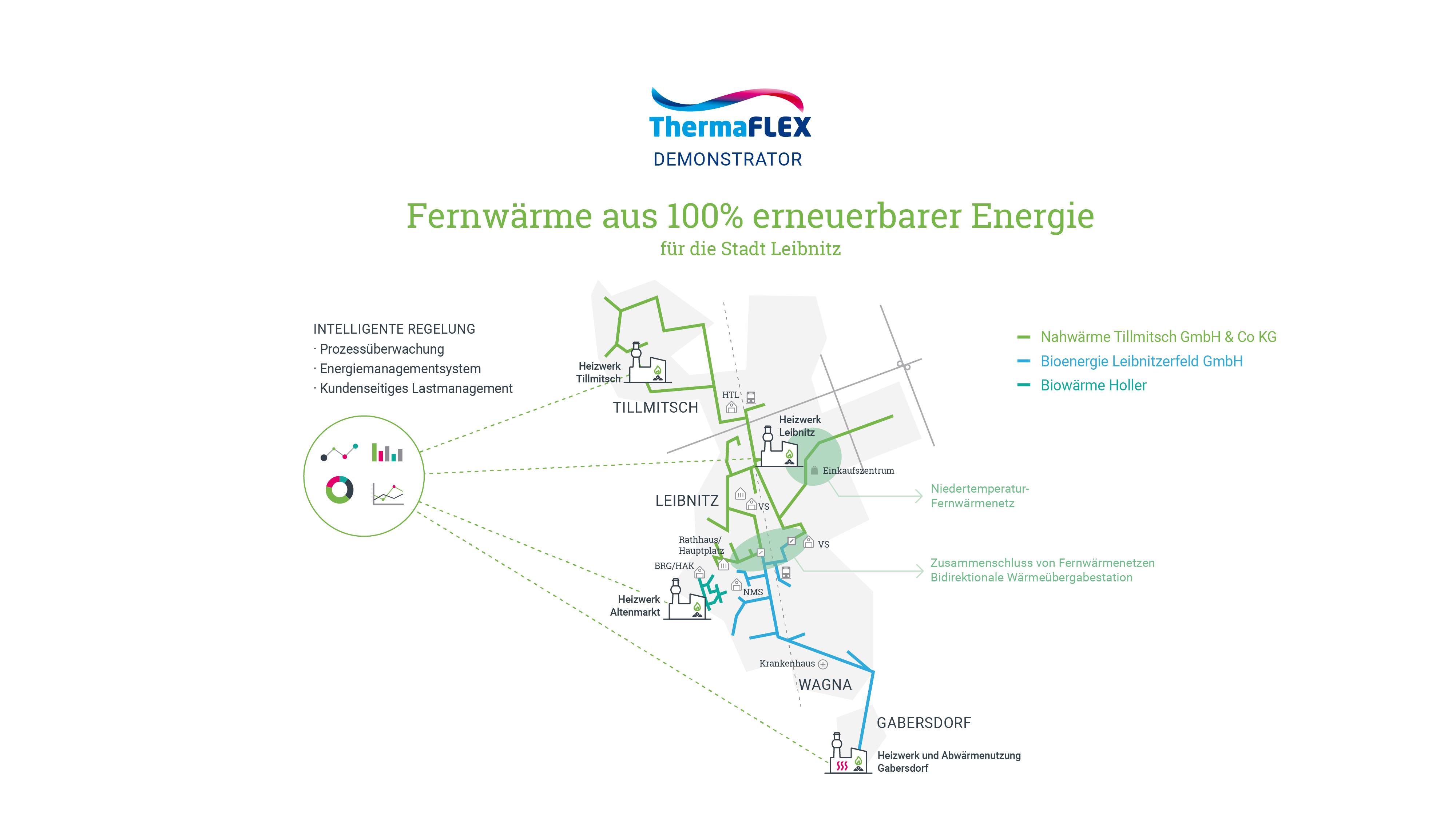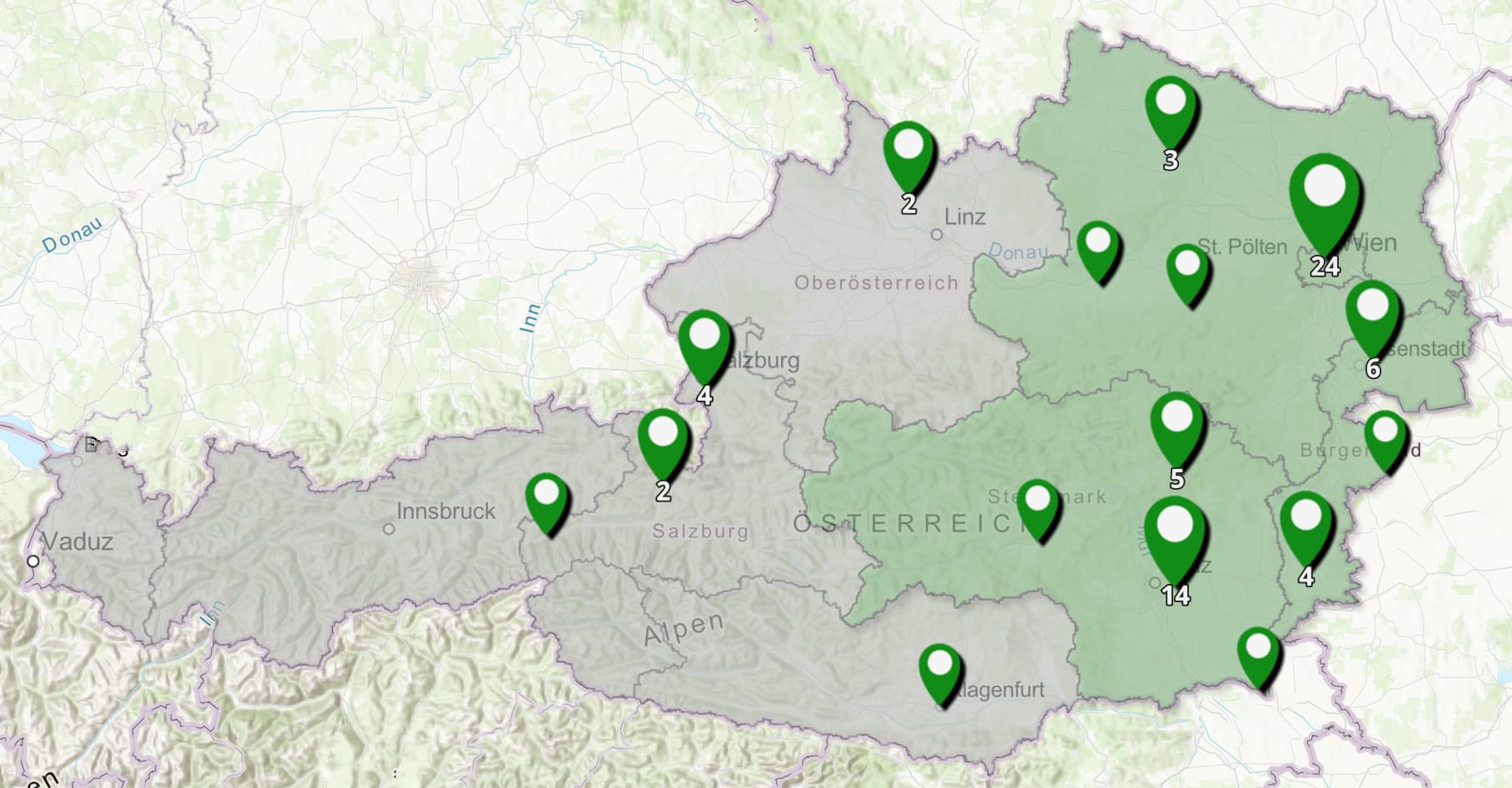100 % Renewable District Heating Leibnitz
THERMAFLEX DEMO PROJECT: District heating from 100% renewable energy from biomass heating plants
This demo is part of the lead-project ThermaFLEX that has been completed. Download the ThermaFLEX Publishable Final Report here.
Objective of the project ThermaFLEX 100 % Renewable District Heating Leibnitz
The district heating supply for the city of Leibnitz and the neighbouring municipalities is to be supplied 100% from renewable energy sources. In order to achieve this goal, a number of measures were implemented to increase the flexibility of the district heating network. The central element was the merger of the two existing heating networks Nahwärme Tillmitsch and Bioenergie Leibnitzerfeld.
Approach and methodology of the project ThermaFLEX 100 % Renewable District Heating Leibnitz
A bi-directional heat transfer station with a transfer capacity of 4 megawatts was built to enable cross-grid heat exchange. It consists mainly of two heat exchangers (2 megawatts each), associated systems (pumps, valves, etc.) and metering equipment. This heat transfer station was installed at the end of 2020 and commissioned in March 2021. In order to fully exploit the ecological and economic potential of inter-grid heat exchange, a corresponding higher-level network control system (EMS Energy Management System) has been developed. The EMS is an intelligent control concept that optimises the use of all heat generators in the entire heating network. This results in a better and more climate-neutral supply than if the heating networks were operated separately.
A preliminary assessment based on historical data, using a simulation of the heating network, showed savings in operating costs of around 9% and a reduction in CO₂ emissions of around 45% for the entire heating network, since, among other things, the use of a gas boiler can be significantly reduced by merging the heating networks. The network connection thus enables a two-way exchange of heat and ensures an efficient and resource-saving heat supply with renewable energies, while at the same time reducing the use of fossil fuels. In the test and validation phase, which continued until the end of the project, the effects of the intelligent control system and the EMS strategy were examined and the control concept was further optimised.
The identification and involvement of all relevant stakeholders and citizens was also strongly emphasised during the development of the heating network. In cooperation with the city of Leibnitz, regular consultations were held between the network operators and the project team. A brochure on the district heating expansion in Leibnitz has also been produced and information evenings have been organised to inform citizens. Regular reports on district heating were published in the city magazine of Leibnitz to keep citizens informed.
The most important key facts are:
| Investment volume | |
| Classic district heating expansion | EUR 2.1 million |
| Flexibility measures ThermaFLEX | EUR 8.6 million |
| Environmental effects (reference: gas) | |
| CO2 savings in district heating expansion (from 2019) | 8,100 t/year |
| CO2 savings ThermaFLEX | 2,000 t/year |
| CO2 emissions Leibnitz city total | 107,000 t/year |
| Technical data | |
| Tillmitsch heating plant (2 boilers + heat recovery) | 1.1 MW |
| Kaindorf heating plant (2 boilers + heat recovery) | 6.8 MW |
| Waste heat extraction TKV | 4.5 MW |
| Gas boiler TKV (backup) | 6.0 MW |
| District heating customers (connected load 2019) | 19.6 MW |
| Total heat sold (2019) | 34,000 MWh |
| Heat network length (2019) | 30.8 km |
| Total planned storage volume | 1,185 m³ |



